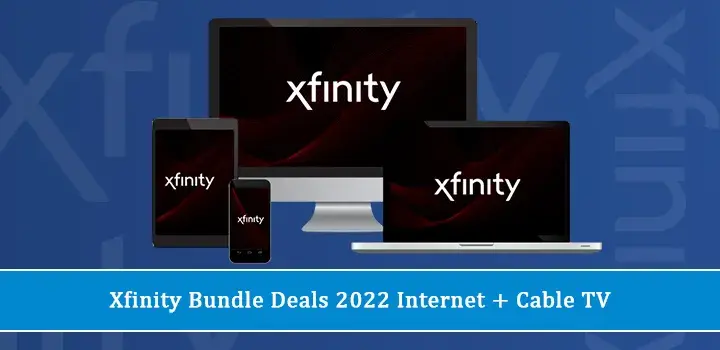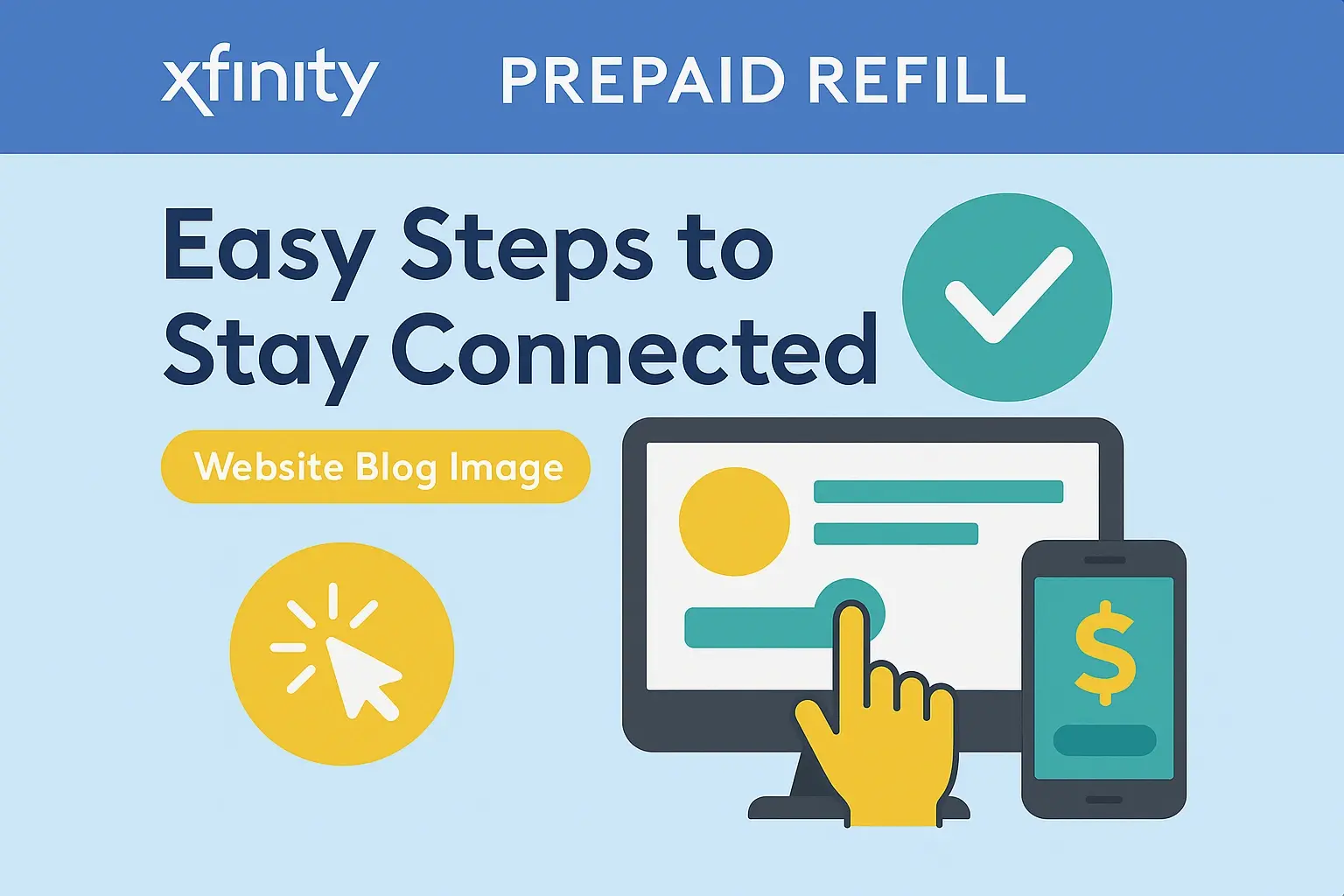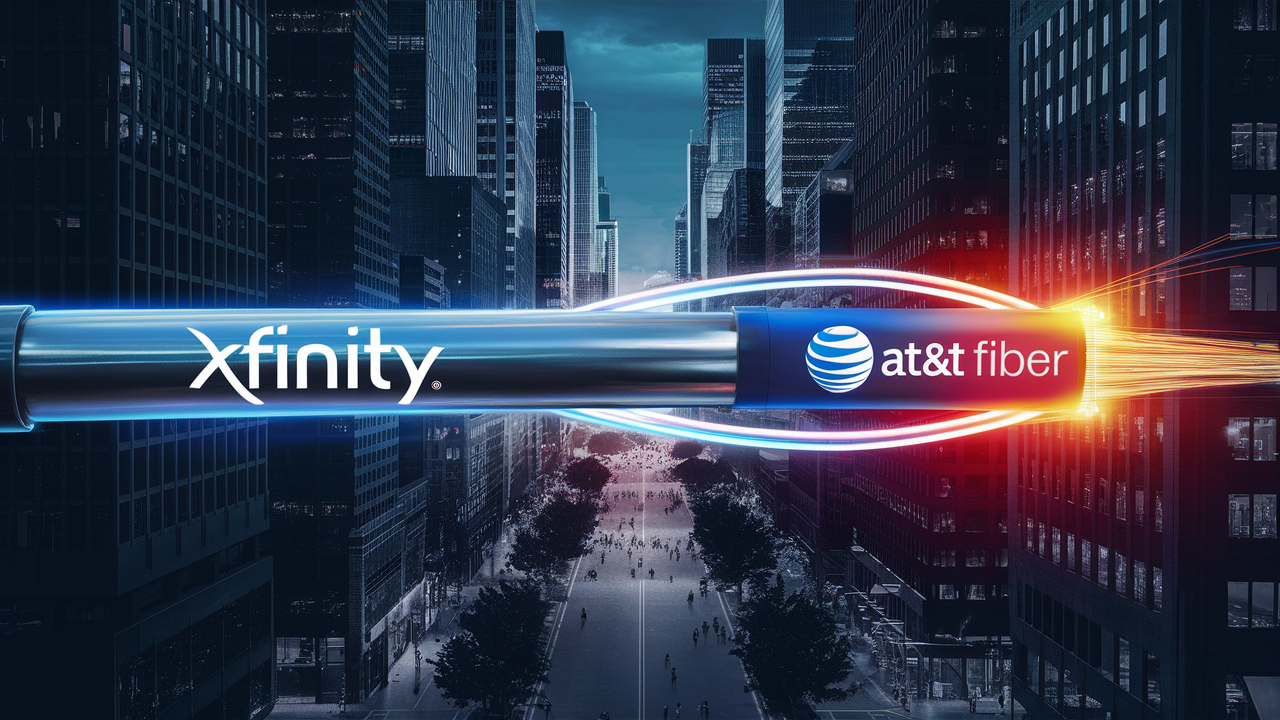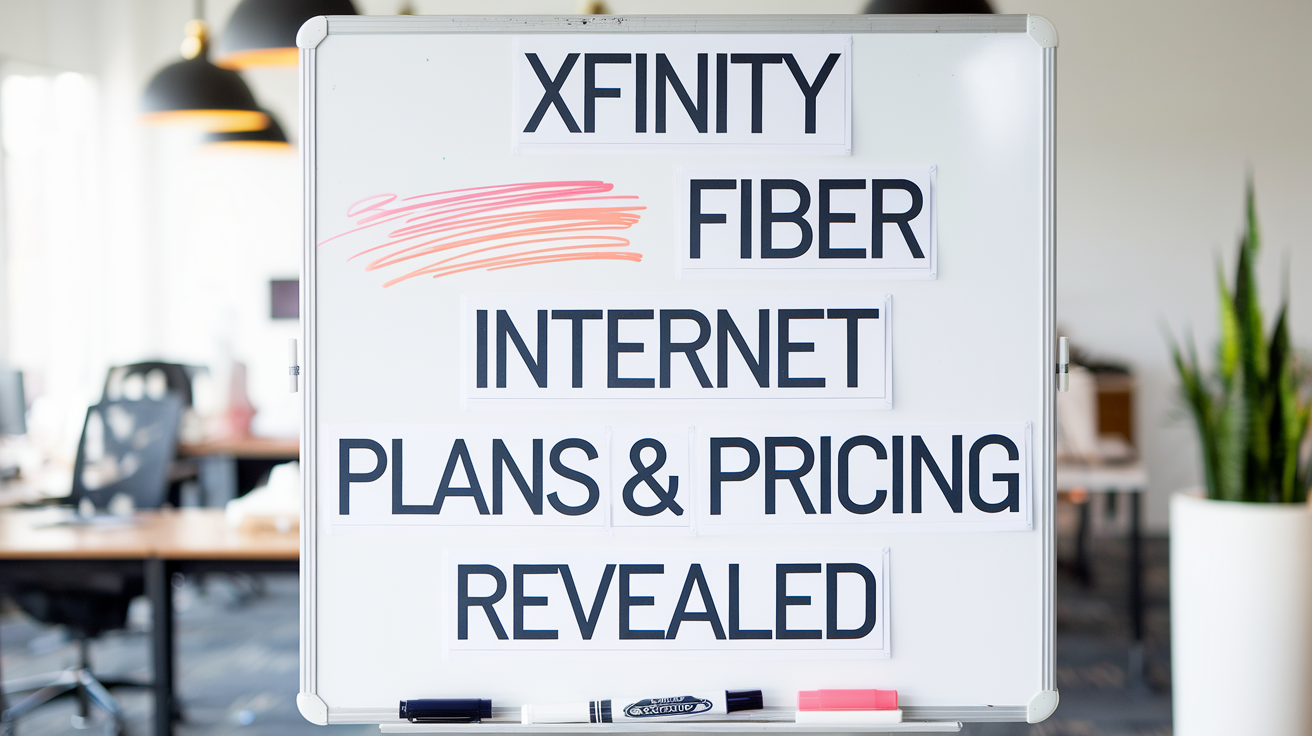Xfinity Bundle Deals 2022 Internet + Cable TV

Discover the most comprehensive guide to Xfinity bundle deals in 2025, specifically focusing on Internet + Cable TV packages. We break down the savings, features, and benefits to help you secure the best value for your home entertainment and connectivity needs this year.
Understanding Xfinity Bundle Deals
In 2025, Xfinity continues to be a dominant force in the telecommunications market, offering a wide array of services including high-speed internet, cable television, and home phone. The concept of bundling these services is not new, but Xfinity consistently refines its offerings to provide attractive packages for consumers. An Xfinity bundle deal typically combines two or more of these services into a single monthly bill, often at a discounted rate compared to purchasing each service individually. This approach simplifies billing and can lead to significant cost savings, making it an appealing option for households looking to streamline their home services. This guide will delve deep into the specifics of Xfinity Internet + Cable TV bundles for 2025, helping you navigate the options and make an informed decision.
Why Bundle with Xfinity? The Advantages
The allure of Xfinity bundle deals lies in their multifaceted benefits, designed to offer convenience and value. For many consumers, the primary driver is the potential for significant cost savings. When you purchase internet and cable TV separately from Xfinity, the combined monthly cost is often higher than a bundled package. By integrating these services, Xfinity incentivizes customers to consolidate their home entertainment and connectivity under one provider, thereby reducing overall household expenses. Beyond financial incentives, bundling simplifies your life. Instead of managing multiple bills from different companies, you receive a single, consolidated statement from Xfinity. This not only reduces administrative overhead but also makes it easier to track your spending and manage your budget. Furthermore, Xfinity often includes exclusive perks and features within their bundles, such as access to premium channels, faster internet speeds, or advanced equipment at no additional cost. These added benefits can enhance your overall experience and provide greater value for your money. The seamless integration of services also means that troubleshooting and customer support are streamlined. If you encounter an issue with your internet or TV, you only need to contact one company, Xfinity, which can often resolve problems more efficiently.
Convenience and Simplicity
Managing multiple service providers can be a hassle. Xfinity bundles consolidate your internet and cable TV into a single monthly bill. This simplifies budgeting and reduces the time spent dealing with different companies for billing inquiries or service issues. Imagine only having one login to manage, one customer service number to call, and one payment to remember each month. This ease of management is a significant advantage for busy households.
Cost Savings
The most compelling reason to opt for an Xfinity bundle is the potential for substantial savings. Providers like Xfinity offer discounted rates on bundled services compared to the sum of individual service costs. These savings can range from 10% to 30% or more, depending on the specific package and current promotions. Over the course of a year, these savings can add up significantly, freeing up budget for other household needs or entertainment options.
Enhanced Features and Perks
Bundles often come with added benefits that might not be available or would cost extra if services were purchased separately. This can include access to premium TV channels, faster internet speeds, advanced modem/router equipment, or complimentary subscriptions to streaming services. These extras enhance the overall value proposition and provide a richer entertainment and connectivity experience.
Streamlined Support
When you bundle with Xfinity, you have a single point of contact for all your service-related inquiries. Whether you have a question about your internet speed, a TV channel lineup, or billing, Xfinity's customer support team can assist with all aspects of your bundled services. This unified support system can lead to quicker problem resolution and a less frustrating customer experience.
Types of Xfinity Internet and Cable TV Bundles
Xfinity offers a tiered approach to its bundles, catering to a diverse range of user needs and budgets. These packages are typically structured around different levels of internet speed and cable TV channel selections. Understanding these tiers is crucial for selecting the bundle that best aligns with your household's usage patterns and entertainment preferences. The fundamental structure involves combining an internet plan with a TV package. Internet plans vary significantly in download and upload speeds, while TV packages differ in the number and types of channels offered. Xfinity often categorizes its bundles into entry-level, mid-tier, and premium options, each designed to meet specific consumer demands.
Basic Bundles (Starter Packages)
These are typically the most affordable options, designed for individuals or small households with moderate internet usage and basic TV viewing habits. They usually include a lower-tier internet speed, sufficient for everyday tasks like browsing, email, and streaming standard-definition content. The TV component often comprises a core lineup of local channels, popular news, and basic entertainment networks. These bundles are ideal for budget-conscious consumers who prioritize essential connectivity and a limited selection of television programming.
Mid-Tier Bundles (Balanced Options)
Striking a balance between cost and features, mid-tier bundles offer a step up in both internet speed and TV channel selection. These packages are suitable for families or households with multiple users, moderate to heavy internet usage (including HD streaming and online gaming), and a desire for a wider variety of entertainment channels. You'll typically find faster download speeds and a more comprehensive channel lineup that includes sports, movies, and popular lifestyle networks.
Premium Bundles (Ultimate Experience)
For the most demanding users, premium bundles provide the highest internet speeds and the most extensive TV channel packages. These are perfect for households with multiple simultaneous users, heavy reliance on high-bandwidth activities like 4K streaming, large file downloads, and professional remote work. The TV component in premium bundles often includes all major networks, premium movie channels (like HBO, Showtime, Starz), extensive sports packages, and international channels. These bundles offer the most comprehensive entertainment and connectivity solution but come at a higher price point.
Customizable Bundles (Build Your Own)
Xfinity also allows for a degree of customization, enabling users to tailor their bundles to specific needs. While not a distinct tier, this option allows you to mix and match internet speeds and TV packages that might not be pre-defined in the standard tiers. This flexibility can be beneficial if your requirements don't perfectly fit into the standard offerings, allowing you to create a truly personalized bundle.
Key Components: Internet Speeds and TV Tiers
When evaluating Xfinity Internet + Cable TV bundles in 2025, two primary components dictate the package's features and price: internet speed and the TV channel tier. Understanding the nuances of each is paramount to making an informed decision that aligns with your household's specific requirements and budget. Xfinity offers a spectrum of internet speeds, from basic connectivity for light users to ultra-fast speeds for power users. Similarly, their TV packages range from essential local channels to comprehensive lineups featuring premium networks and sports. The combination of these two elements forms the foundation of any Xfinity bundle.
Internet Speed Tiers
Xfinity's internet service is delivered via a hybrid fiber-coaxial cable network, providing robust performance. The speeds are typically advertised in download Mbps (megabits per second). Common tiers include:
- Performance Starter/Basic: Often around 25-100 Mbps download. Suitable for basic web browsing, email, and streaming standard-definition content on one or two devices.
- Performance Pro/Plus: Typically ranges from 100-300 Mbps download. Ideal for moderate usage, HD streaming on multiple devices, online gaming, and video conferencing.
- Blast!/Extreme Pro: Speeds often fall between 300-800 Mbps download. This tier is excellent for heavy internet users, households with many connected devices, 4K streaming, and demanding online activities.
- Gigabit/Gigabit Pro: Offers speeds of 1 Gbps (1000 Mbps) or even 2 Gbps (2000 Mbps) download. These are the highest tiers, designed for power users, businesses, and households with extremely high bandwidth demands.
It's important to note that upload speeds are generally lower than download speeds with cable internet, though Xfinity has been increasing upload capacities in some areas. For most home users, download speed is the primary consideration.
TV Channel Tiers
Xfinity's cable TV offerings are structured into various packages, each with a different selection of channels:
- Digital Starter: The most basic TV package, typically including local broadcast channels, popular news networks (CNN, Fox News), and a few basic entertainment channels (e.g., USA, HGTV).
- Digital Preferred: A more comprehensive package that adds a significant number of popular entertainment, sports, and movie channels. This often includes channels like ESPN, AMC, Discovery, and TBS.
- Premier/Ultimate: The highest tier, offering the most extensive channel lineup. This usually includes all channels from lower tiers plus premium movie channels (HBO, Cinemax, Showtime, Starz), comprehensive sports packages (like NFL Network, MLB Network), and sometimes international channels.
Many bundles also offer options to add premium channels or sports packages as add-ons, allowing for further customization.
Evaluating Internet Speeds for Your Needs
Choosing the right internet speed is critical for a satisfactory online experience. Overpaying for excessive speed is wasteful, while opting for too little can lead to frustration, buffering, and slow performance. In 2025, with the increasing reliance on streaming, remote work, and online gaming, understanding your household's bandwidth demands is more important than ever. Xfinity offers a wide range of speeds, and selecting the appropriate tier within a bundle is key to maximizing value.
How Many People Use the Internet?
The number of active internet users in your household is a primary factor. A single user with basic needs will require far less bandwidth than a household of four or more, each with multiple devices. For instance, if you have a family of four, and each person uses their own device for streaming, gaming, or video calls simultaneously, you'll need a significantly faster connection than a single individual who primarily checks email and browses occasionally.
What Activities Do You Perform Online?
Different online activities have varying bandwidth requirements:
- Basic Browsing and Email: These activities require minimal bandwidth. Speeds of 25-50 Mbps are generally sufficient.
- Streaming Standard Definition (SD) Video: Typically requires around 3-5 Mbps per stream.
- Streaming High Definition (HD) Video: Requires approximately 5-8 Mbps per stream.
- Streaming 4K Ultra HD (UHD) Video: Demands significantly more bandwidth, around 25 Mbps per stream.
- Online Gaming: While download speed is important for game downloads, latency (ping) is often more critical for a smooth gaming experience. However, multiple simultaneous streams or downloads can still strain lower-speed connections. Speeds of 50-100 Mbps are generally recommended for moderate gamers, with higher speeds for competitive or professional gamers.
- Video Conferencing (e.g., Zoom, Teams): HD video conferencing typically requires 3-4 Mbps for upload and download. For multiple simultaneous calls, higher speeds are advisable.
- Large File Downloads/Uploads: Downloading or uploading large files (e.g., software updates, large documents, video projects) benefits greatly from higher speeds. Gigabit speeds can make these tasks take minutes instead of hours.
How Many Devices Are Connected?
In 2025, the average household has numerous connected devices, including smartphones, tablets, laptops, smart TVs, gaming consoles, smart home devices (speakers, thermostats, cameras), and more. Each device, even if not actively in use, can consume some bandwidth or contribute to network overhead. A higher number of connected devices necessitates a more robust internet plan to ensure smooth performance for all users.
Rule of Thumb for Device Count:
- 1-5 Devices: Basic to Mid-tier internet speeds (50-300 Mbps) are usually sufficient.
- 6-15 Devices: Mid-tier to High-tier internet speeds (300-800 Mbps) are recommended.
- 15+ Devices: Gigabit speeds are often necessary for optimal performance.
Consider Future Needs
Technology evolves rapidly. What seems sufficient today might be inadequate in a few years. If you anticipate adding more devices, increasing your streaming habits, or adopting new bandwidth-intensive technologies, it's wise to choose an internet speed that offers some headroom for future growth. While upgrading is possible, starting with a slightly higher speed can sometimes be more cost-effective in the long run.
Navigating Xfinity TV Packages
Xfinity's cable TV packages offer a diverse range of content, from local channels to premium movie and sports networks. The key to selecting the right TV tier within an Xfinity bundle lies in understanding your household's viewing habits and preferences. Are you a casual viewer who enjoys popular shows, a sports enthusiast who follows multiple leagues, or a cinephile who craves the latest blockbusters? Your answers will guide you toward the most suitable package.
Understanding Channel Lineups
Xfinity organizes its TV offerings into distinct tiers, each with a progressively larger selection of channels. The core difference between these tiers is the breadth and depth of content available. It's essential to review the specific channel list for each package to ensure it includes your must-watch channels. Websites like Xfinity's official site or third-party comparison sites often provide detailed channel lists for each tier.
Local Channels and Broadcast Networks
All Xfinity TV packages, even the most basic, typically include local broadcast channels (ABC, CBS, NBC, FOX, PBS) in your area. These are essential for local news, weather, and popular network programming. Ensure that these are available in the package you choose.
Entertainment and Lifestyle Channels
Mid-tier and premium packages significantly expand the selection of entertainment channels. This includes popular networks like:
- General Entertainment: USA, TBS, TNT, FX, Comedy Central, MTV, Bravo, E!
- Lifestyle & Reality: HGTV, Food Network, TLC, Discovery Channel, Animal Planet, Travel Channel.
- News: CNN, MSNBC, Fox News, CNBC, HLN.
- Kids & Family: Disney Channel, Nickelodeon, Cartoon Network.
If your household enjoys a variety of shows across different genres, a mid-tier package is often a good starting point.
Sports Channels
For sports fans, the availability of specific sports networks is paramount. Xfinity offers:
- National Sports Networks: ESPN, ESPN2, FS1, NFL Network, MLB Network, NBA TV, NHL Network, Golf Channel.
- Regional Sports Networks (RSNs): These vary by location and broadcast local professional and college sports teams.
- Premium Sports Packages: Such as the NFL RedZone, NBA League Pass, MLB Extra Innings, and NHL Center Ice, which are usually add-ons or included in the highest tiers.
If you follow specific teams or leagues, verify that the corresponding channels are included in the package or available as an add-on.
Movie Channels
Cinephiles will find value in packages that include premium movie channels:
- Premium Movie Networks: HBO, Cinemax, Showtime, Starz, Encore, TMC (The Movie Channel).
- Basic Movie Channels: AMC, FXM, TCM (Turner Classic Movies).
These channels offer a constant stream of current and classic films, often without commercials. These are typically found in the higher-tier packages or as optional add-ons.
International and Specialty Channels
Xfinity also offers packages with channels in various languages or catering to niche interests, such as specific ethnic programming or educational content. These are usually available as separate add-on packages.
Current Xfinity Bundle Deals 2025: What to Expect
As we navigate 2025, Xfinity continues its strategy of offering bundled packages designed to attract and retain customers. While specific promotions and pricing can vary significantly by region and are subject to change, there are general trends and types of deals that consumers can anticipate. The core value proposition remains the same: combining internet and cable TV services to achieve cost savings and convenience. Expect to see a range of bundle options, from introductory offers for new customers to more robust packages for existing subscribers looking to upgrade or add services. The market for broadband and pay-TV services remains competitive, with providers like Verizon Fios, Spectrum, and AT&T constantly vying for market share. This competition often drives Xfinity to offer attractive incentives, especially for new sign-ups.
New Customer Promotions
Xfinity frequently rolls out special promotions for new customers. These can include:
- Discounted Monthly Rates: For the first 12 or 24 months of service.
- Waived Installation Fees: Saving customers an upfront cost.
- Free Equipment Upgrades: Such as a free modem rental or a complimentary DVR box.
- Gift Cards or Bill Credits: Offering a monetary incentive upon signing up.
These introductory offers are designed to make switching to Xfinity more appealing. It's crucial to understand the terms and conditions, particularly the price after the promotional period expires, as rates often increase significantly.
Existing Customer Offers
While new customer deals often get the most attention, existing Xfinity customers can also find opportunities for savings. These might involve:
- Upgrade Incentives: Discounts on faster internet speeds or premium TV packages.
- Bundling Additional Services: Adding Xfinity Mobile or Home Security can sometimes unlock further discounts on existing internet and TV services.
- Loyalty Programs: While not always explicitly advertised, long-term customers may be eligible for retention offers or special discounts if they inquire.
Package Examples (Illustrative)
While exact pricing is region-specific, here are illustrative examples of what bundles might look like in 2025:
Example 1: The "Starter" Bundle
- Internet: Performance Starter (approx. 100 Mbps download)
- TV: Digital Starter (local channels + basic entertainment)
- Estimated Price: $60-$80/month (promotional rate for 12 months)
- Best For: Small households, light internet users, basic TV viewers.
Example 2: The "Family" Bundle
- Internet: Performance Pro (approx. 300 Mbps download)
- TV: Digital Preferred (expanded entertainment, sports, movie channels)
- Estimated Price: $90-$120/month (promotional rate for 12 months)
- Best For: Families, moderate to heavy internet users, those who enjoy a variety of TV programming.
Example 3: The "Ultimate" Bundle
- Internet: Blast! Pro or Gigabit (approx. 800 Mbps - 1 Gbps download)
- TV: Premier (all major networks, premium movie channels, extensive sports)
- Estimated Price: $130-$180+/month (promotional rate for 12 months)
- Best For: Power users, households with many devices, avid streamers, sports enthusiasts, and movie buffs.
Remember, these are just examples. Actual prices and package contents will vary. Always check Xfinity's official website for the most up-to-date deals in your specific area.
How to Find and Compare Xfinity Bundle Deals
Securing the best Xfinity bundle deal requires a strategic approach. Simply visiting the Xfinity website might present you with standard offerings, but by employing a few key tactics, you can uncover better value and ensure you're getting a package that truly fits your needs and budget. The process involves research, comparison, and sometimes a bit of negotiation.
Visit the Official Xfinity Website
The primary source for Xfinity's offerings is their official website. Navigate to the "Bundles" or "Deals" section. You'll typically need to enter your address to see the specific packages and pricing available in your area, as availability and promotions can be highly localized.
Use Third-Party Comparison Sites
Numerous websites specialize in comparing internet and TV providers. These sites can be invaluable for:
- Aggregating Deals: They often list deals that might not be prominently featured on the provider's site.
- Side-by-Side Comparisons: Allowing you to easily compare features, speeds, channel lineups, and prices across different providers and Xfinity's own packages.
- User Reviews: Providing insights into other customers' experiences with specific bundles or Xfinity's service in general.
Examples include HighSpeedInternet.com, CNET, and RTINGS.com (for TV-related insights).
Call Xfinity Directly
Don't underestimate the power of a phone call. Customer service representatives, especially those in retention departments, often have access to deals not advertised online. When you call:
- Be Prepared: Know what you're looking for (internet speed, TV channels) and your budget.
- Mention Competitor Offers: If you've seen better deals elsewhere, let them know. They might be willing to match or beat them.
- Ask About Promotions: Inquire specifically about new customer deals, introductory offers, or any current discounts.
- Ask About Contract Terms: Understand the length of the promotional period and the price after it ends.
Consider Adding Mobile or Home Security
Xfinity offers mobile phone service (Xfinity Mobile) and home security (Xfinity Home). Bundling these services with your internet and TV can sometimes unlock additional discounts or create a more comprehensive home solution. If you're in the market for a new mobile plan or home security system, explore these options.
Read the Fine Print
This is crucial. Always understand:
- Contract Length: Are you locked into a 12-month, 24-month, or month-to-month agreement?
- Promotional Period: How long will the discounted rate last?
- Regular Pricing: What will the monthly cost be after the promotion ends?
- Equipment Fees: Are modem/router rentals included, or are they extra?
- Installation Fees: Are they waived, or is there a charge?
- Data Caps: While less common for Xfinity internet, some plans might have data limits.
- Early Termination Fees (ETFs): What are the penalties for breaking the contract early?
Transparency is key, and understanding all terms will prevent unexpected charges later.
Factors Influencing Xfinity Bundle Pricing
The price you ultimately pay for an Xfinity bundle is not static. Several variables interact to determine the monthly cost. Understanding these factors can help you better anticipate pricing and identify opportunities for negotiation or cost reduction. Xfinity's pricing strategy is dynamic, influenced by market conditions, your location, and the specific services you select.
Geographic Location
This is perhaps the most significant factor. Xfinity's service availability and pricing vary dramatically by region. Areas with more competition from other providers (e.g., fiber optic services from AT&T or Verizon) may see more aggressive pricing and promotions. Conversely, areas where Xfinity has less competition might have higher standard rates. Your specific address dictates which packages are available and at what price.
Promotional vs. Standard Rates
As mentioned earlier, most advertised Xfinity bundle deals feature promotional pricing that lasts for a limited time (typically 12 or 24 months). After this period, the price reverts to the standard, non-promotional rate, which is usually considerably higher. It's essential to factor in the standard rate when evaluating the long-term cost of a bundle.
Internet Speed Tier
Higher internet speeds naturally come with a higher price tag. A bundle including Gigabit internet will cost more than one with 100 Mbps, all other factors being equal. The demand for faster speeds continues to grow, and providers price their tiers accordingly.
TV Package Tier and Premium Channels
Similarly, the breadth of the TV channel lineup directly impacts the bundle's cost. A package with hundreds of channels, including premium movie networks like HBO and sports packages, will be more expensive than a basic tier with only local and a few popular networks. Add-ons for specific sports or movie channels will also increase the monthly bill.
Contract Length
Xfinity often offers better promotional pricing for customers who agree to a longer contract term (e.g., 24 months) compared to month-to-month agreements or shorter contract terms. However, longer contracts can also mean higher early termination fees if you need to switch providers before the term is up.
Equipment Rental Fees
While some bundles may include modem and TV box rentals, others might charge additional monthly fees for this equipment. These fees can add $10-$20 or more to your monthly bill. Purchasing your own compatible modem and router can sometimes lead to savings over time, but it requires initial investment and compatibility checks.
Installation and Activation Fees
New customers may encounter one-time fees for professional installation and service activation. While these are often waived as part of promotional offers, they can be a significant upfront cost if not discounted.
Additional Services and Add-ons
Bundling Xfinity Mobile, Xfinity Home, or adding features like DVR service, international calling, or specific premium channel packages will increase the overall monthly cost. Each addition contributes to the final price.
Maximizing Your Xfinity Bundle: Tips and Tricks
Once you've selected an Xfinity bundle, the journey isn't over. To ensure you're getting the most value and the best possible experience, consider these tips and tricks. These strategies focus on optimizing your service, managing costs, and leveraging the full benefits of your bundle.
Review Your Bill Regularly
It's easy to set up auto-pay and forget about your monthly bill. However, regularly reviewing your statement is crucial. Check for:
- Accuracy: Ensure the charges match what you agreed upon.
- Rate Increases: Be aware of when your promotional period ends and the price is set to increase.
- Unused Services: Verify that you're not being charged for add-ons or features you no longer use or need.
Catching errors or unexpected price hikes early can save you money.
Negotiate When Promotions End
As your promotional period nears its end, contact Xfinity to inquire about renewal options or new deals. Don't automatically accept the standard rate. Be prepared to:
- Research Competitor Offers: Know what other providers are offering in your area.
- Express Your Intent to Switch: This often prompts retention specialists to offer better deals.
- Ask for Loyalty Discounts: Highlight your history as a customer.
- Be Willing to Compromise: You might not get the exact same promotional rate, but you can often secure a better deal than the standard price.
Optimize Your Equipment
Xfinity offers its own gateway devices (modems and routers combined) and TV boxes. While convenient, these often come with monthly rental fees. Consider the following:
- Purchase Your Own Modem/Router: If compatible, buying your own equipment can save you money on rental fees over the long term. Check Xfinity's list of approved devices.
- Understand Your TV Box Needs: Do you need a DVR? How many boxes do you require for different rooms? Opting for fewer boxes or a non-DVR option can reduce costs.
- Ensure Proper Placement: For Wi-Fi, ensure your router is placed in a central location for optimal coverage.
Take Advantage of Xfinity Perks
Bundles often come with hidden or underutilized benefits:
- Xfinity Wi-Fi Hotspots: Xfinity provides access to a vast network of public Wi-Fi hotspots. Use these when you're on the go to save your mobile data.
- Included Streaming Apps: Some bundles might offer access to Xfinity's streaming app or partner apps, allowing you to watch content on multiple devices.
- On-Demand Content: Explore the extensive library of on-demand movies and shows included with your TV package.
Consider Adding Xfinity Mobile
If you're looking for a mobile plan, Xfinity Mobile uses the Verizon network and can offer significant savings, especially if you have multiple lines or are already an Xfinity internet customer. Data is shared across lines, and you only pay for the data you use, with unlimited options available. Bundling mobile can sometimes lead to additional discounts on your core services.
Monitor Your Internet Usage
While Xfinity's most popular plans don't have hard data caps, they do have data usage thresholds. If you consistently exceed these thresholds, you might face throttling or overage charges (though this is less common with typical home internet plans). Understanding your usage patterns can help you avoid potential issues and ensure you have the right speed tier.
Potential Downsides and Considerations
While Xfinity bundle deals offer numerous advantages, it's essential to approach them with a balanced perspective. Like any service provider, Xfinity has potential drawbacks that consumers should be aware of before committing. Understanding these limitations allows for more informed decision-making and helps manage expectations.
Price Increases After Promotions
This is arguably the most significant concern for many consumers. The attractive introductory rates offered in bundle deals are temporary. Once the promotional period ends (usually 12 or 24 months), the monthly bill can jump significantly. Customers who are not proactive in renegotiating may find themselves paying a much higher rate than anticipated. It's crucial to know the standard rate and budget accordingly.
Contract Obligations and ETFs
Many Xfinity bundle deals require a contract, often for 12 or 24 months. While this secures the promotional pricing, it also means you'll face substantial Early Termination Fees (ETFs) if you decide to cancel the service before the contract term is up. This can be a deterrent for those who prefer flexibility or anticipate moving to an area not served by Xfinity.
Customer Service Experiences
Customer service quality can be subjective and vary widely. While some customers report positive interactions, others experience long wait times, difficulty resolving issues, or unhelpful representatives. It's wise to research recent customer service reviews for Xfinity in your specific region.
Internet Speed Variability
While Xfinity advertises specific speeds, actual performance can fluctuate. Factors such as network congestion in your area, the quality of your home wiring, and the performance of your equipment can all impact your real-world speeds. Cable internet, by its nature, can experience more variability than fiber optic connections, especially during peak usage hours.
Data Caps and Throttling
While Xfinity has largely moved away from strict data caps on its primary internet plans, some legacy plans or specific promotions might still have data usage limits. Exceeding these limits can result in overage charges or reduced speeds (throttling). It's important to confirm the data policy for the specific bundle you are considering.
Limited Choice in Some Areas
In certain regions, Xfinity may be the only viable provider for high-speed internet or comprehensive cable TV. This lack of competition can sometimes translate to less competitive pricing and fewer incentives for the provider to improve service quality or customer support.
Equipment Rental Costs
The monthly fees for renting Xfinity's modems, routers, and TV boxes can add up significantly over time. While purchasing your own compatible equipment can mitigate this, it requires an upfront investment and careful research to ensure compatibility and optimal performance.
Xfinity Bundle Deals vs. Competitors
When evaluating Xfinity bundle deals in 2025, it's crucial to compare them against offerings from other major providers. The competitive landscape for internet and cable TV services is dynamic, with various companies vying for your business. Key competitors include:
Spectrum
Spectrum, owned by Charter Communications, is a major competitor, particularly in areas where Xfinity does not operate. Spectrum also offers internet, TV, and phone bundles. Their internet speeds are generally comparable to Xfinity's, though they often have fewer speed tiers. Spectrum is known for offering unlimited data on its internet plans without additional fees, which is a significant advantage over some providers that may impose data caps. TV packages are also similar in structure, with varying channel lineups. Pricing is often competitive, but contract terms and promotional periods should be carefully compared.
Verizon Fios
Verizon Fios stands out by offering a 100% fiber optic network. This typically translates to symmetrical download and upload speeds, which is a major advantage for users who upload large files, stream extensively, or engage in heavy video conferencing. Fios bundles often include TV, internet, and phone services. Their pricing can be competitive, especially for higher-speed tiers, and they often offer attractive introductory deals. However, Fios availability is limited to specific geographic areas, primarily on the East Coast. If Fios is available in your area, it's a strong contender, especially if symmetrical speeds are a priority.
AT&T
AT&T offers a mix of services, including Fiber (where available) and DSL internet, along with U-verse TV and DirecTV streaming services. AT&T Fiber provides symmetrical speeds similar to Verizon Fios and is a strong competitor in terms of performance. However, AT&T Fiber is not as widely available as Xfinity or Spectrum. Their DSL service, while more widespread, offers significantly lower speeds than cable or fiber. AT&T's TV offerings are also diverse, including traditional U-verse packages and streaming options like DirecTV Stream. Bundling strategies and pricing vary widely based on the specific service type (Fiber vs. DSL) and region.
DirecTV Streaming and Other OTT Providers
Beyond traditional cable companies, Over-The-Top (OTT) streaming services like YouTube TV, Hulu + Live TV, Sling TV, and DirecTV Stream offer alternatives for TV viewing, often bundled with internet from a separate provider. These services can be more flexible, without long-term contracts, and may offer a more curated selection of channels at a lower price point for basic packages. However, they typically do not include internet service, meaning you'll still need a separate internet plan, and premium channels or extensive sports packages can still increase the cost. Comparing the total cost of an independent internet plan plus an OTT service versus an Xfinity bundle is essential.
Comparison Table (Illustrative 2025)
| Feature | Xfinity | Spectrum | Verizon Fios (Fiber) | AT&T Fiber |
|---|---|---|---|---|
| Internet Technology | Cable | Cable | Fiber Optic | Fiber Optic |
| Symmetrical Speeds | Limited (increasing) | No | Yes | Yes |
| Data Caps | May apply (check plan) | No | No | No |
| Bundling Options | Internet, TV, Phone, Mobile | Internet, TV, Phone | Internet, TV, Phone | Internet, TV (via DirecTV), Phone |
| Availability | Widespread (US) | Widespread (US) | Limited (primarily East Coast) | Limited (expanding) |
| Contract Requirement | Often required for promotions | Often required for promotions | Less common for promotions | Less common for promotions |
When comparing, always look at the total monthly cost after promotional periods, contract lengths, data policies, and the specific features included in the bundles.
Conclusion: Securing Your Best Xfinity Bundle Deal
In 2025, Xfinity bundle deals for Internet + Cable TV continue to offer a compelling value proposition for many households seeking a streamlined and cost-effective home entertainment and connectivity solution. By combining high-speed internet with a diverse range of cable television channels, Xfinity aims to simplify billing and provide significant savings compared to purchasing services individually. The key to unlocking the best deal lies in understanding your specific needs – from required internet speeds and device usage to preferred TV channel lineups and viewing habits. Thorough research, comparison shopping across different providers and packages, and proactive negotiation are essential steps in securing a bundle that aligns with your budget and expectations. Remember to scrutinize contract terms, promotional periods, and potential price increases after introductory offers expire. By leveraging the insights and strategies outlined in this guide, you are well-equipped to navigate the complexities of Xfinity bundle deals and make an informed decision that maximizes value and enhances your home's digital experience throughout 2025 and beyond.





